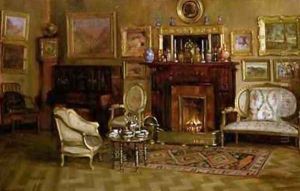Maud Hall Neale Paintings
Maud Hall Neale was a British artist known for her delicate watercolor paintings and intricate illustrations, primarily focusing on botanical subjects and landscapes. Born in 1870, Neale's art education and early career were framed by the Victorian era's fascination with nature and the burgeoning Arts and Crafts movement, which emphasized handcraftsmanship and the beauty of natural forms. Neale's work, though not as widely recognized as some of her contemporaries, embodies the intricate attention to detail and the deep appreciation for the natural world that were hallmarks of this period.
Neale's artistic journey began at a young age, encouraged by the artistic inclinations of her family and the cultural milieu of the time, which saw a surge in interest in botany and natural sciences. This interest is reflected in her choice of subjects, which often included floral arrangements, gardens, and occasionally, rural landscapes. Her style was characterized by a meticulous approach to the depiction of her subjects, capturing not just their form but the essence of their natural beauty.
Throughout her career, Neale exhibited her work in various venues, including the Royal Academy of Arts, though she maintained a relatively low profile in the broader art world. Her contributions to art were more subtle and perhaps more personal, resonating with those who had a particular affinity for the naturalist and aesthetic values she represented.
Despite the limited recognition during her lifetime, Maud Hall Neale's work has garnered more interest in recent years, with art historians and collectors appreciating the quiet beauty and technical skill of her watercolors. Her paintings now serve not only as beautiful examples of early 20th-century British art but also as historical documents that capture the flora of her era in exquisite detail.
Maud Hall Neale passed away in 1953, leaving behind a body of work that continues to be appreciated for its contribution to the tradition of British watercolor painting and illustration. Her legacy is a testament to the enduring appeal of nature in art and the importance of preserving these delicate portrayals of the natural world for future generations.
